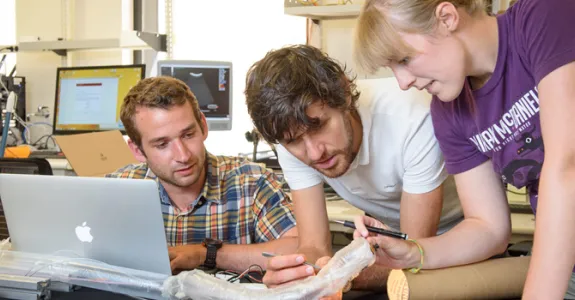
Dr. Okamura received the BS degree from the University of California at Berkeley in 1994, and the MS and PhD degrees from Stanford University in 1996 and 2000, respectively, all in mechanical engineering. She is currently Associate Professor in the mechanical engineering department at Stanford University. She was previously Professor and Vice Chair of mechanical engineering at Johns Hopkins University. She has been an associate editor of the IEEE Transactions on Haptics, an editor of the IEEE International Conference on Robotics and Automation Conference Editorial Board, and co-chair of the IEEE Haptics Symposium. Her awards include the 2009 IEEE Technical Committee on Haptics Early Career Award, the 2005 IEEE Robotics and Automation Society Early Academic Career Award, and the 2004 NSF CAREER Award. She is an IEEE Fellow. Her academic interests include haptics, teleoperation, virtual environments and simulators, medical robotics, neuromechanics and rehabilitation, prosthetics, and engineering education. Outside academia, she enjoys spending time with her husband and two children, running, and playing ice hockey.
Haptics, the sense of touch, is crucial for human exploration and manipulation of the world. In medicine and rehabilitation, haptic interaction is often necessary for reasons of performance, safety, and user acceptance. The CHARM Lab's research is devoted to developing the principles and tools needed to realize advanced robotic and human-machine systems capable of haptic interaction. They are particularly interested in:
- Teleoperation: Devices, models, and control systems that allow human operators to manipulate environments that are remote in scale and/or distance. Prostheses can also be considered a form of teleoperator.
- Virtual Environments: Specialized models, simulators, control systems, and devices that enable compelling touch-based interaction with computers (e.g., surgical simulators and planners).
- Robotic Manipulation: Robots that physically manipulate their environment or their own shape, incorporating novel designs, touch sensors, and control systems.
Their design and study haptic systems using both analytical and experimental approaches. This research has applications in many areas, including robot-assisted surgery, simulation and training, rehabilitation, exploration of hazardous or remote environments, enabling technologies, manufacturing, design, mobile computing, and education. A major theme of our work is biomedical systems.








